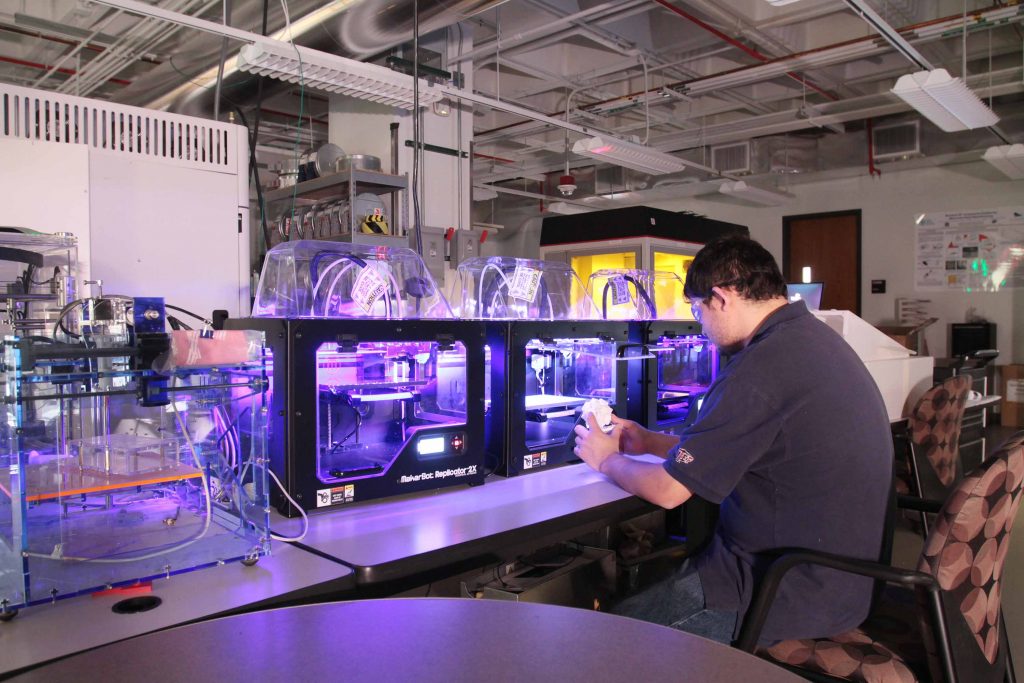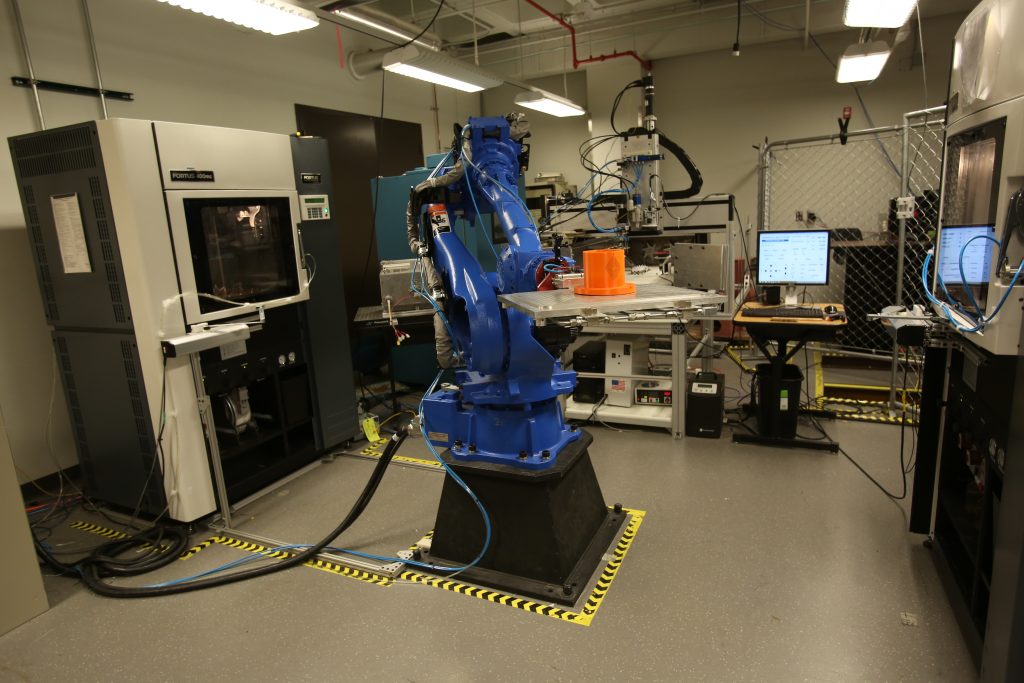Two metal 3D printing projects at the University of Texas at El Paso (UTEP) have been awarded funding in a nine-hundred thousand dollar grant from the U.S. Army Research Laboratory (ARL).
With problem-solving objectives, the projects look to develop a method of monitoring and auto-correcting powder-bed fusion based processes, and to enhance the mechanical properties of metal parts through nitride coating.

Both projects will be held at the UTEP W.M. Keck Center for 3D Innovation, a facility focused on developing new additive manufacturing applications and processes.
Ryan Wicker, director of the Keck Center, comments, “We are extremely pleased to have an opportunity to expand on the work we do here at the Keck Center,”
“This is a testament not only to the unique capabilities of our facility but also to the expertise offered by our faculty and staff.”
A U.S. center of additive manufacturing excellence
In July 2017, UTEP launched its first Graduate Certificate and 3D Printing and Additive Manufacturing, making the most of the Keck Centre’s expertise. Prior to that, the university also became host to America Makes’ first Satellite Center, part of America’s National Network of Manufacturing Innovation.
One of the innovative processes to be developed at the Keck Center so far is the Multi3D System – a robotic arm powered collaboration between twin Stratasys Fortus 3D printers.

The 13,000 square foot facility is now equipped with more than 50 additive manufacturings machines, covering both polymeric and metallic materials.
Problem-solving while you print
ARL money will be delivered to the Keck Center over a period of three years. The first $300,000 will be received this year, and will be used to fund the research of Wicker, Cesar Terrazas, UTEP assistant professor, and Philip Morton, the Keck Center applications manager.
In the first of the two projects, Morton explains how infrared cameras will be used to develop an intelligent system for AM system monitoring that can adapt to avoid defects. “A lot of people are already interested in process monitoring,” he says, “You can buy some systems with cameras. But what we’re trying to add is real-time defect detection in order to make real-time corrections.”
Lawrence Livermore National Laboratory (LLNL), California, is one of the trailblazers of such processes, having published a series of papers considering the spatter effect in selective laser melting (SLM) systems. As Morton notes, many metal 3D printers also come included with a monitoring facility, but this project will be the next step.
Boosting load bearing capabilities
In the second project, Morton goes on to describe how the team aim to develop a nitriding process, that would take place during a print job, to enhance the mechanical performance of a metal part.
“Typically, if you nitride something, it’s a surface coating,” he explains, “So, you can’t really get these nitrides inside of the metal easily. The idea is tailoring the microstructure.”

In addition to metal part design based on load bearings and mechanical stress, the nitriding process will help tailor the structure of a part for optimum use. “It’s a new tool to solve a problem”” Morton adds,
“Traditionally, a designer can look at a part and say, ‘Oh, it needs to be thick here to withstand the load.’ But what we’re wanting to do is tailor sections of it. So, if you had a rocket, you can strengthen the area exposed to the hottest temperatures to avoid failure when running hotter.”
The Keck Center is well equipped to complete the set-goals having a high rate of success in acquiring the appropriate funding.
To stay up to date with research progress subscribe to the 3D Printing Industry newsletter, follow us on Twitter, and like us on Facebook.
Would you like to see UTEP Keck Center researchers commended for their efforts in additive manufacturing? Nominate the research team of the year now in the 2018 3D Printing Industry Awards now.
Featured image shows a robotic arm used in the Keck Center’s Multi3D System. Photo via UTEP/Keck



